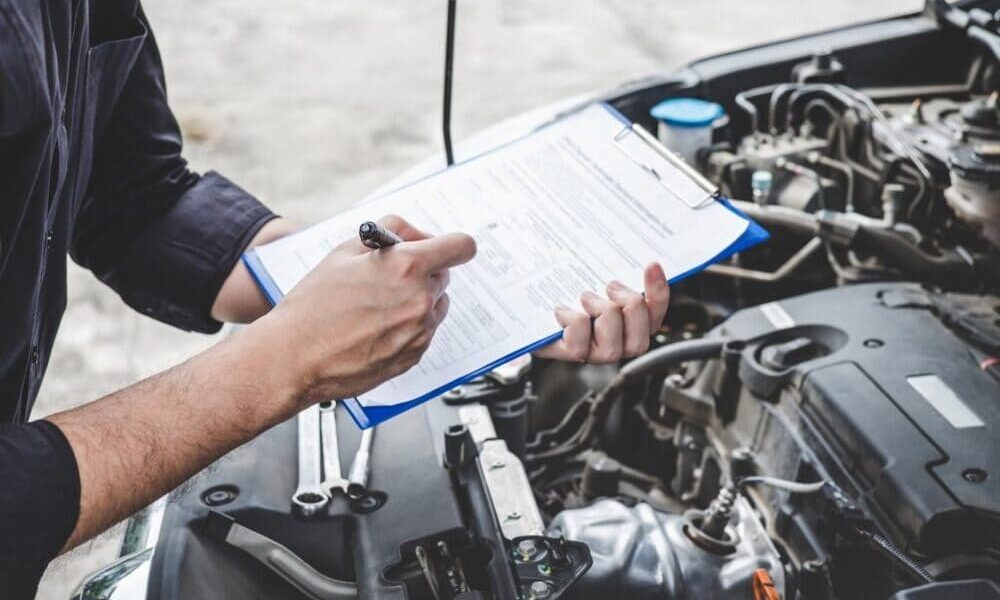
Failing a vehicle safety inspection can be frustrating. You’ve most likely taken time out of your busy schedule to get the test done, only to learn you need to make two more stops: first to your local mechanic and then back to the inspection station. Vehicles need to be inspected after being purchased or registered in Maryland to ensure both personal and community safety. The following are our tips for what to do if your car fails a Maryland safety inspection.
DON’T PANIC
First of all, it’s not the end of the world if you fail your safety inspection. It’s likely due to an issue that needs to be addressed for the safety of other drivers on the road with you as well as your own. In fact, it is extremely common for used cars to fail the first safety inspection. The service station has probably drawn your attention to a serious hazard that you would have needed to take to a Maryland auto repair service to repair anyway.
HAVE A MECHANIC MAKE ALL NECESSARY REPAIRS
Some safety inspection stations offer repair services on-site. However, it is always best to work with a trusted mechanic. Have your local auto repair technician take a look at any documentation the inspection station gives you so that they can ensure your car is safe to operate.
COMMON REASONS FOR SAFETY INSPECTION FAILURE
- Brakes – The mechanic conducting your inspection will test the brake system’s hydraulic system, drum and disc, linting and pads for wear or damage. They will also be looking at the general condition of linkage and the vacuum or hydraulic booster system’s condition. They may test the stopping distance and parking brake function as well.
- Suspension System – Ball joint wear and damage to shock absorbers or struts can cause safety test failure. Kingpins, spindle bolts and wheel bearings will also be examined.
- Seatbelts – A broken seatbelt can most definitely cause your vehicle to fail a safety inspection. You’ll want to have your local mechanic take a look ahead of time and make sure all seatbelts are in good working order before taking your car in for an inspection.
- Tires and Wheels – Tires will be inspected for condition of studs, lugs, wheels and nuts, as well as size, type, and tread depth.
- Steering System – The inspector will check the condition of the steering wheel and steering column, as well as the power steering.
- Lighting – All lights must be functional at the time of your inspection. This includes headlights, taillights, fog lights, high beams, and internal lighting.
- Fuel System – Choke, handle throttle and accelerator operation will be tested, and any fuel tank leaks will likely lead to a failed test.
- Emissions and Exhaust Systems – A vehicle’s catalytic converter, air injection system, exhaust gas recirculation system, and evaporative emissions system all must be in proper working order to pass a Maryland safety inspection. The exhaust system’s piping, muffler, resonator and tail piping will also be checked for leaks and proper mounting.
- Windshield Wipers – It may seem like a small detail, but faulty windshield wiper can make your car unsafe to drive in rain, fog, or snow. If your windshield wipers are not functioning properly or do not have fluid, you will likely fail your test, so have a mechanic take a look beforehand.
- Electrical System – The inspector conducting your test will check for the proper condition and function of your horn, as well as the wiring and switches, including the neutral safety switch in automatic transmissions. They will also check the battery cables and hold down.
- Bumper and Fender – The bumper will be evaluated for height and proper mounting. The condition of the fenders, including coverage of wheels and tires, will also be checked.
- Interior Elements – Your vehicle’s odometer must be operating properly and registered in mph or kilometers for a safety certificate. There must also be no holes or rusted areas in the vehicle’s floor or truck pan. All door handles and latches must function optimally and the driver’s seat must be mounted properly and in good condition overall.
- Mirrors – Mirrors are critical to the safe operation of any vehicle. If your mirrors are cracked or broken, take your car to a mechanic to have them repaired, as you will most definitely fail a safety inspection. Mirrors, both on the inside and outside, must provide an unobstructed view of respective parts of the car and around it.
CHECK YOUR LOCAL EMISSIONS TEST STANDARDS
Each state has different regulations regarding safety inspections. In Maryland, passenger cars, light trucks, SUVs and trailers under 20 ft in length must pass a safety inspection and carry and inspection certificate. Your first safety retest is free as long as it is completed within 30 days or before you put an addition 1,000 miles on the car and the required repair can be visually confirmed. If you fail again or exceed the 30-day window or 1,000-mile limit, however, you will need to pay another fee. If you fail due to an emissions-related issue and spend over $450 on emissions-related vehicle repairs, you might be eligible for a Maryland emissions waiver. To apply for the waiver, you must complete the backside of the vehicle inspection report you were given after your initial test, so be sure to hold onto it. You must also submit receipts from your auto repair garage.
SEEK PROFESSIONAL GUIDANCE
Consult with your local mechanic. They will advise you as to whether your vehicle will be able to pass a second safety inspection. If they believe the car is unsafe to drive, they will give you their professional opinion and you may have to make some big decisions regarding purchasing a new car. However, it is highly likely that your vehicle needed maintenance and is now ready for a second inspection.
Courtesy of hollenshades










